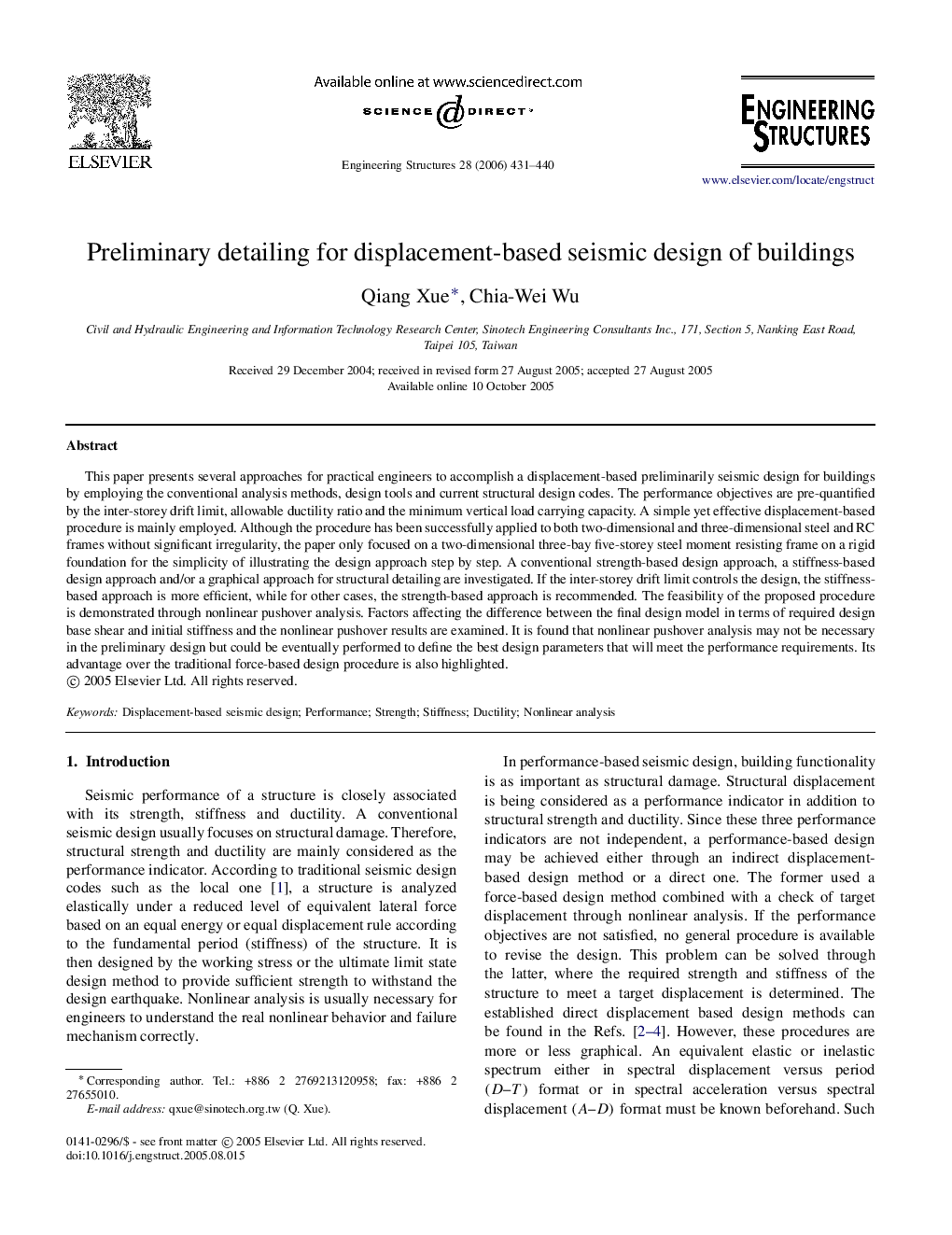| Article ID | Journal | Published Year | Pages | File Type |
|---|---|---|---|---|
| 269183 | Engineering Structures | 2006 | 10 Pages |
This paper presents several approaches for practical engineers to accomplish a displacement-based preliminarily seismic design for buildings by employing the conventional analysis methods, design tools and current structural design codes. The performance objectives are pre-quantified by the inter-storey drift limit, allowable ductility ratio and the minimum vertical load carrying capacity. A simple yet effective displacement-based procedure is mainly employed. Although the procedure has been successfully applied to both two-dimensional and three-dimensional steel and RC frames without significant irregularity, the paper only focused on a two-dimensional three-bay five-storey steel moment resisting frame on a rigid foundation for the simplicity of illustrating the design approach step by step. A conventional strength-based design approach, a stiffness-based design approach and/or a graphical approach for structural detailing are investigated. If the inter-storey drift limit controls the design, the stiffness-based approach is more efficient, while for other cases, the strength-based approach is recommended. The feasibility of the proposed procedure is demonstrated through nonlinear pushover analysis. Factors affecting the difference between the final design model in terms of required design base shear and initial stiffness and the nonlinear pushover results are examined. It is found that nonlinear pushover analysis may not be necessary in the preliminary design but could be eventually performed to define the best design parameters that will meet the performance requirements. Its advantage over the traditional force-based design procedure is also highlighted.
